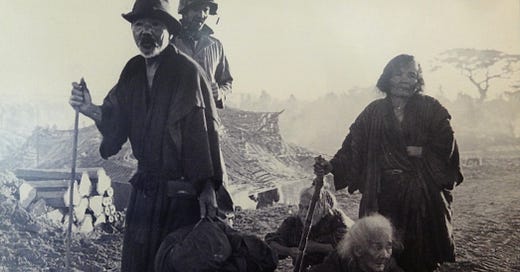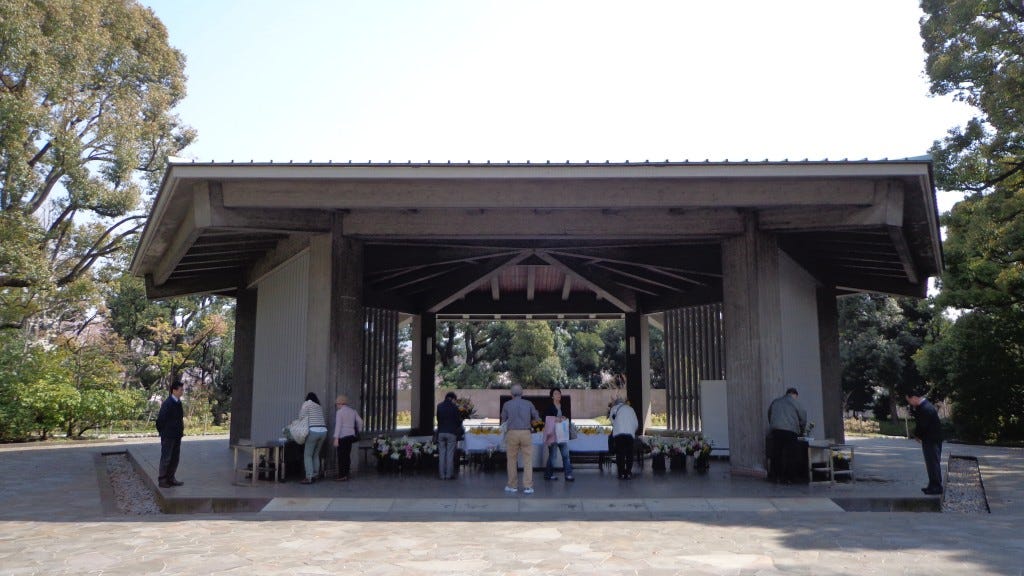The Ryukyu Shinpo is, together with the Okinawa Times, the prefecture’s main newspaper and, like The Times, is critical of the U.S.-Japan Security Treaty and the U.S. bases in Okinawa. Among the many stories related to the American military presence in Japan, the paper reported in detail the protests following the appointment of Kevin K. Maher as coordinator of the relief activities (called Operation Tomodachi) that followed the Great East Japan Earthquake in March 2011. Maher had just been dismissed from a previous job by the U.S. Department of State for declaring that Okinawa was a “master of blackmail and deception.”
In February I had a chance to talk to the Ryukyu Shinpo’s editor-in-chief, Matsumoto Tsuyoshi, about the archipelago’s history and some of its recurring issues. Born in Naha in 1965, Matsumoto joined the paper in 1989. He has been in charge of several departments including the crime, political and economic pages before becoming the deputy editor-in-chief in 2013. He has been in his current position since April 2019.
What are your thoughts on the 50th anniversary of the return of Okinawa to Japan?
Let me start with a personal memory about the day when Okinawa was returned to the Japanese sovereignty. As you can imagine, everybody was very happy. At that time – 15 May 1972 – I was in my first year of elementary school while my father was an employee of the Okinawa Prefectural Government. He had been assigned to the office that was in charge of the celebrations for the return of Okinawa to Japan. After the ceremony was over, members of the labor unions and other residents gathered at a park nearby to discuss the fact that Okinawa’s return to Japan wasn’t really going to change anything for them since the local U.S. military base was still there and continued to be a burden to the community. The discussion was followed by a protest rally under the pouring rain. I was there, riding on my father’s shoulder.
On that morning, at school, my teacher had said that it was a great day for Okinawa. We had been served a special lunch that included kohaku manju (traditional flour-based pastry eaten during special celebrations) so you can imagine how happy I was. But that night, when my father took me to the rally, everybody for some reason was angry. That’s my first vivid memory of being conscious that things in Okinawa were not right: being with my father for two hours under the rain, surrounded by angry people.
This year we celebrate the 50th anniversary of that event and I’m turning 56, but in many respects, things haven’t changed. Too many American bases are still in Okinawa, and people still complain against the fact that 70% of the American bases in Japan are still located in Okinawa.
At the Ryukyu Shinpo we have decided not to use the expression “return to the mainland”; instead, we call it “return to Japan” because we feel that after 50 years, our desire to see Okinawa transformed into a peaceful island has not been realized yet. The anger felt by the people who attended that rally with me is still there. Okinawa was first separated from the rest of the country with the complicity of the Japanese government. 50 years ago, it was returned by the U.S. military administration, that’s true, but the real problem is that too many things about Okinawa are still decided by the American and Japanese governments without bothering to consult us. In other words, in 1972, Okinawa was formally returned to Japan, but only on paper. Even now, after 50 years, we are still discussing the problematic correlation between these three players: Okinawa, Japan, and America.
Granted, the restoration of Japanese authority over Okinawa has also meant building new roads and factories and a general improvement in the quality of life in the islands. The archipelago has also become very popular with tourists, both from abroad and the rest of Japan. However, there is still a lot to be done. It’s not just a matter of being treated unfairly when it comes to national security because we have to shoulder most of the burden of hosting the U.S. bases. Okinawa, for example, is one of the prefectures with the lowest income level in the country, and according to the latest survey the childhood poverty rate in Okinawa is 23%, about twice the national average. When you look at these numbers you realize that the local economy is far from healthy and the quality of life of many families is quite unsatisfactory. We still have to face many challenges such as delays in developing a solid social structure and adequate educational environment. And all this is a consequence of the long shadow that the 27 years of U.S. military rule have cast on Okinawa.
You probably know the Chidorigafuchi National Cemetery for the War-Dead in Tokyo. It is a facility that keeps the remains of “those who died overseas in the past big war.” When I visited the place, I was surprised to see that Okinawa was listed as an “overseas theatre.” In other words, according to the Japanese government, those who were killed in the Battle of Okinawa died in a foreign country.
Okinawa attracts a lot of people from the mainland, be it tourists or students on a school trip. They swim in our beautiful sea, taste our food and beer, and tour the battlefields. They come here both for fun and to learn about history, and in the process, they contribute to our economy. So, as you see, even war has turned into a profitable industry and I feel very grateful for that. However, we cannot forget the events that led to the current situation. Namely, in 1609, the Lord of Satsuma invaded the Ryukyu Kingdom and turned it into a tributary state. Then, in 1879, Japan unilaterally annexed the kingdom to Japan. And finally, at the end of the Pacific War, the U.S. military occupied the archipelago and, following the San Francisco Peace Treaty, took Okinawa from Japan. In any case, one way or another, throughout all these years, our people have endured some kind of discrimination.
For example, in 1940, before the start of the Pacific War, there was a long debate over what to do with the local language. Among the intellectuals from both inside and outside the prefecture who were studying Okinawan culture was folklorist Yanagi Muneyoshi, a Japanese art critic who had founded the mingei (folk craft) movement. He declared that the Okinawan language was very valuable and worth preserving from extinction. Indeed, he didn’t consider Okinawan simply as a dialect, but as a language. However, the Prefectural Government was aiming at eradicating the local languages and dialects and enforcing standard Japanese throughout the archipelago. Yanagi considered this policy a disgrace.
Currently, do young people usually speak the Okinawan language?
First of all, I would like to clarify that a unified Okinawan language does not exist. I mean, the prefecture is comprised of many islands, big and small, and each district has its own language that differs very much from the others. In some of these areas, older people still speak the local language on a daily basis, and the young people who have grown up in such families have inherited the ability to speak them. But unfortunately, they are a minority. Since 2001, the Ryukyu Shinpo has been surveying on this topic. We do it every five years, so last year we finished our fifth survey. According to the latest results, 25% of Okinawa residents said that they can speak one of the local languages to a certain degree. That’s the lowest figure since 2001 and includes people who are not fluent. Five years before, by the way, it was 40% which means that in just five years the percentage of people who can more or less communicate in the local language has decreased by 15 points. If we don’t come up with a quick solution, we are going to lose this important part of our culture.
You are portraying a rather bleak picture of your prefecture.
Luckily, not everything is bad. I have worked at the Ryukyu Shinpo since 1989. In that year, 2.67 million tourists visited Okinawa. When their number rose to five million, then governor Nakayama declared that Okinawa’s next target was to double that figure. I thought it was impossible. Yet, in 2019, we exceeded ten million tourists for the first time. In other words, their number has quadrupled in the last 30 years. It is now clear that the tourist industry is Okinawa’s future. The manufacturing sector is rather weak, but the tertiary, i.e. tourism and the service sector are our strength, particularly now that the prefecture is attracting more and more visitors from Southeast Asia, China, Taiwan, Hong Kong, South Korea and Singapore. What I’m trying to say is that yes, we can’t forget about the problems related to the American bases, but I’m very optimistic about the future.






Prof. Gianni, you are doing a great job. Keep it up.